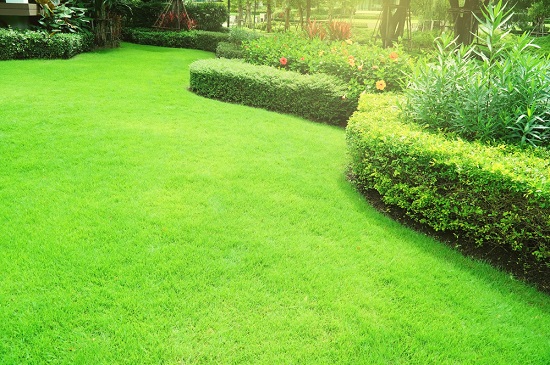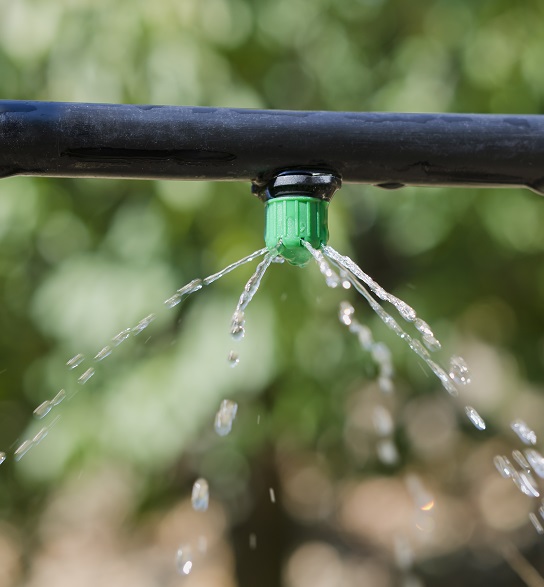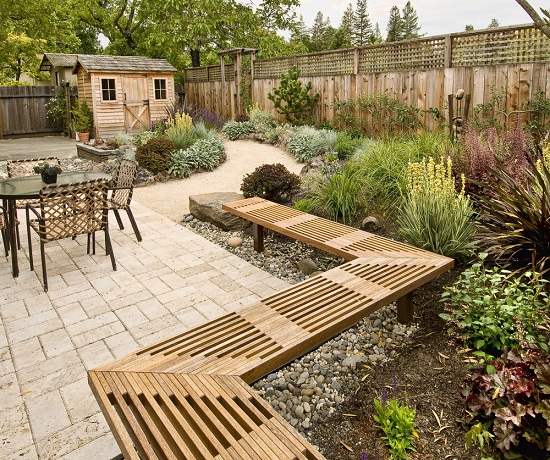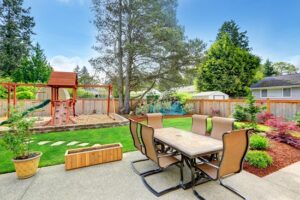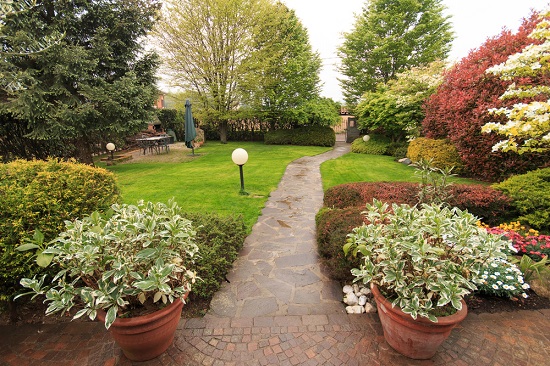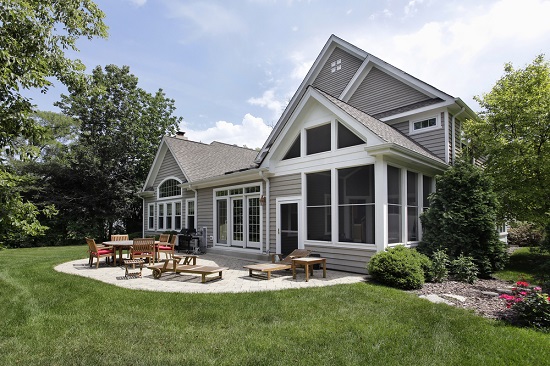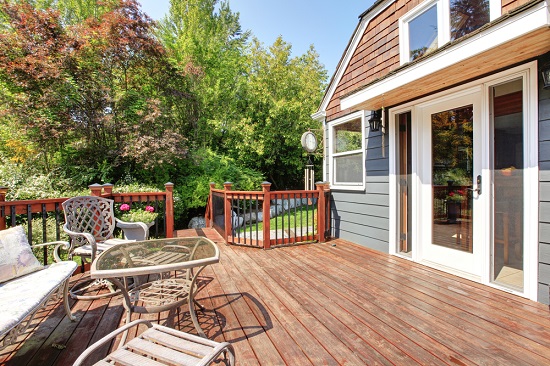
The human brain is amazing. However, it is possible to trick it. Small yards can appear larger by using gardening and landscaping Charleston SC methods that change the perception. These tips can be used to improve small front and side yards.
Install Pavers, Decking in a Right Direction
The illusion of a larger space is created by the use of diagonal paths. If space allows, let the walkway run diagonally, or turn around. Lay pavers in a diagonal design on your patio or walkway to increase the area. This is also true for decking. Lay planks diagonally on a square deck, as shown above, rather than horizontally or vertically. It is also a good idea to include hardscaping like stepping stones along with pavers and decking.
To trick the eye, reduce the width of the walkway as the walkway progresses towards the backyard. This will make it seem farther away than it actually is.
Use Color in the Entry
Bright colors will draw attention to the yard’s entry and make the rest of it recede. Red, orange, and yellow are stimulating colors that should be used where people want to focus. Cool colors like pink, purple and blue blend well with other greenery, so they don’t trigger the same emotions. These colors should be placed near the borders and fences of your yard.
Warm colors can be planted near the house by homeowners to draw attention to the property. The same effect can be achieved with red bricks. This effect can be achieved by relying on flowers.
Create Levels
By adding levels to a yard, you can create depth and interrupt a small space. When we refer to levels, it simply means an elevated patio, or a raised container or planter.
Incorporate Surroundings This technique is used in Japanese gardens for many centuries. If you have a beautiful view beyond your yard’s borders, make use of it. You might live in a canyon in San Diego, where you can see native plants from your yard. To create a cohesive look, incorporate similar plants into your landscaping design. The yard should look like it is blending into the canyon.
Use tropical plants with big leaves
Planning in a small space is not easy without considering the plant texture. Experts refer to large leaves as “coarse leaves” because they are often found on tropical plants such as philodendrons or alocasias (elephant ears). They make small spaces feel bigger when placed in the preferred focal point, or towards the entrance. Experts believe it is because large leaves offer more visual interest than smaller leaves and shadows create the illusion of depth.
Frame a View With a Trellis or Pergola, or an Arbor A large structure can give a small yard a grand look while also providing shade and support for greenery above ground. This is a great feature for small spaces that don’t have enough greenery. Because vines come in a variety of growth patterns and aesthetic qualities, it is important to plan your structure and plants together to get the look you desire. As they direct traffic flow, it is a good idea to have arbors that are the same or larger than your doors. A space that makes people duck when passing through an arbor could make it feel smaller.
As a way to trick the eye and decorate the front yard, arbors such as this one are often seen.
Divide the Space
Japanese gardens also use this technique to add surprise and dimension to their spaces. It is a way to create more than one space. You could create an outdoor dining space, but keep the lounging furniture in another area. You can use planters, small walls, or linear fountains for your outdoor decorating.
Use a Focal Point.
Although this design uses a variety of techniques, the flower sculpture at the yellow wall draws attention to the space’s back immediately.
Plant Container Gardens Carefully
To draw the eye down, container gardens should have trailing vines and succulents on the sides.
Place Fine Textured Plants near Edges
Smaller leaves are easier to see. Because they reflect so much light, they blend in with the background and appear distant. These plants should be placed near the borders of your yard. Large-leafed plants should be placed in the front or at the focal point.
Match Fixtures and Overall design
You can bring your modern home into the landscape design. You should blur the lines between indoors and outdoors. Landscape lighting design is crucial for this. Although it might look great to have a modern landscape design next to an old cottage, if space is your goal, this strategy may not work. The brain might see the yard and house as distinct entities rather than as one unit.
Hang Mirrors
Although not an everyday garden feature, homeowners hang mirrors out to reflect light and bring other areas of their yard together, as shown above. To withstand the elements, choose stainless steel, copper, or treated wood mirror frames.
Think Up
Tall trees and vertical walls can add dimension to small spaces by adding pergolas, trellis, or arbors. Leyland Cypress is a common choice for privacy screens. They grow at a rate of 3-4 feet per year and are commonly planted in this area. They are small and thin, but they can be disease-prone.
Southern California is home to giant birds of paradise and banana plants. If you want to add interest or cover a boring fence, vertical gardens are a good option. A row of tall bamboo can be used to cover it. You don’t have to restrict the growth to the fence’s top; grow as high as you can.
Use Grass
Although grass can be used in small yards, it is better to use it with other materials than to cover the entire area. Low-maintenance synthetic turf is a better option than spending the time and money to maintain a small lawn.
Call Porter Hayes Landscaping LLC now if you need professional help with yard care, landscaping, hardscaping, or patio installation.
Porter Hayes Landscaping LLC
Charleston, SC 29419
(843) 532-3270
http://www.porterhayeslandscaping.com/
